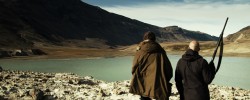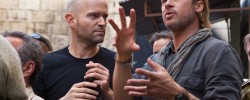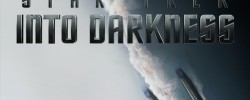
Los Angeles Film Festival: Documentary Wrap-up, Part II

Editor’s Notes: The following article is part of our coverage for the Los Angeles Film Festival. For more information on the festival visit http://www.lafilmfest.com/ and follow the Los Angeles Film Festival Festival on Twitter at @LAFilmFest.
Purgatorio (2013)
Rodrigo Reyes presents a Buñuel-inspired mosaic of the flora and fauna of la frontera (‘the border’) that separates Mexico from the United States and the towns found on either side of it. Through interviews and disparate shots of places/objects, it captures impressions of the kind of (in)activities that occur in this midway space of violence, fear, and hope: unfinished neighbourhoods, rows of abandoned houses, refuse, the parched earth, and the construction of an X icon as a symbol of optimism. Reyes takes the religious meaning of purgatory as the space of temporary punishment or purification for those who have died in a state of grace (and so can become fit to enter heaven) to paint a pre- and post-lapsarian world dictated by the maddening logic of la frontera. The opening images are of a world devoid of humans, clean and paradisiacal, with animals calmly eating vegetation, while the concluding images are of a world now imprinted with the mark of humans through mountains of trash. The emphasis is on the man-made limited lives and actions available to those at la frontera: drugs, crime, god, journalism, law enforcement, and migration, presented without judgment.
In fact, the images are presented in a de-dramatised way, as if conscious that spectators have become all too familiar with these subjects through other films that address the same issue: those who attempt to cross the border; a man who unofficially patrols the border to clean up the trash that results from the human traffic in the area or to capture people, if the opportunity arises; a good Samaritan church member who leaves food/water hanging from tree branches for those crossing the border; an official border patrolman; a coroner who examines the deceased bodies brought from the area; a drug addict who finds in his habit the only thing worth doing on his side of la frontera; family members mourning their children’s deaths due to criminal activities; and a journalist aware of the risks he runs in doing what he does. The dull voiceover also reinforces the film’s neutrality, to draw out paradoxically the disturbing content of the images.
A woman whose children have died due to drug-related criminal activity states plainly that what is happening is in fact a war and one should not mince words about it. The idea of a ‘war’ is made hauntingly visual by images of ghost towns, the result of the evacuation of humans driven by fear, above all. Scenes that could be considered having shock value elsewhere becomes the quotidian here, such as encountering the deceased, slumped body of a man against a wall, shot because of a drug dealing-related scuffle, or witnessing the rounding up of ownerless mad dogs that are eventually euthanised because of insufficient manpower to rehabilitate them and insufficient monies to fund such efforts. These segments reference metonymically both the everyday violence in which frontera towns are cloaked and the people who do what they can to fight, escape, or play into such violence.
Related Posts
![]()
Rowena Santos Aquino
![]()
Latest posts by Rowena Santos Aquino (see all)
































